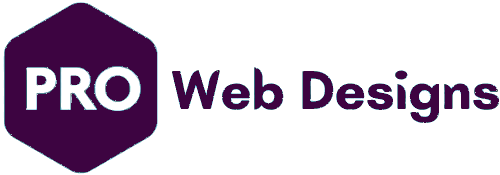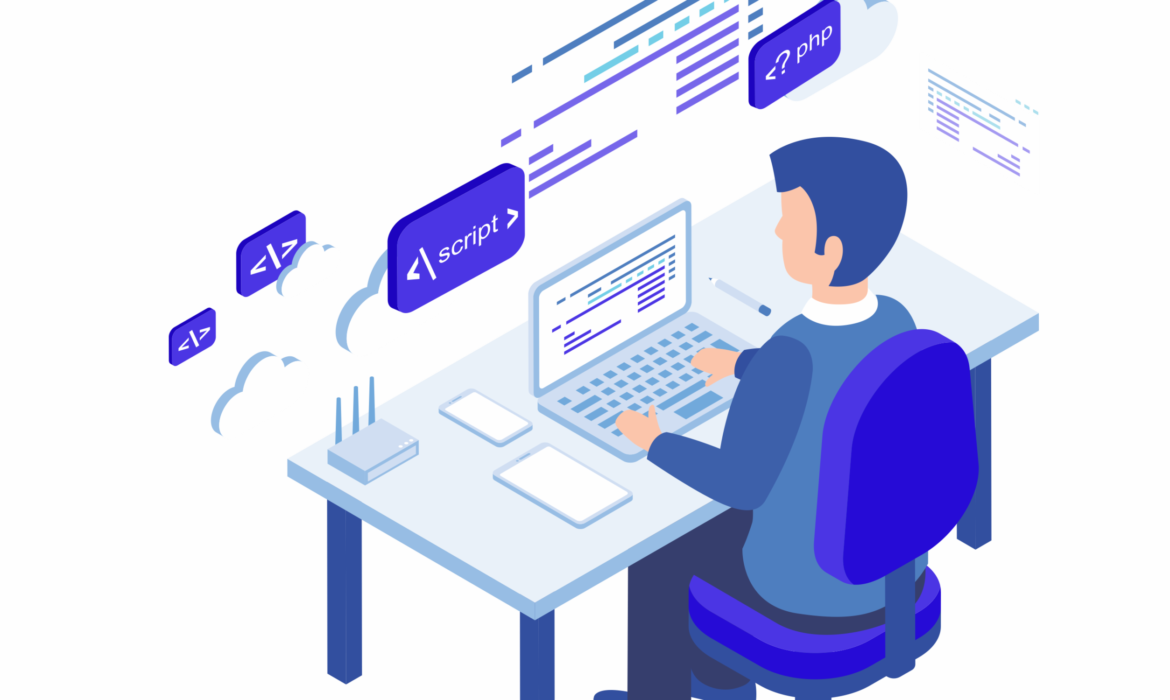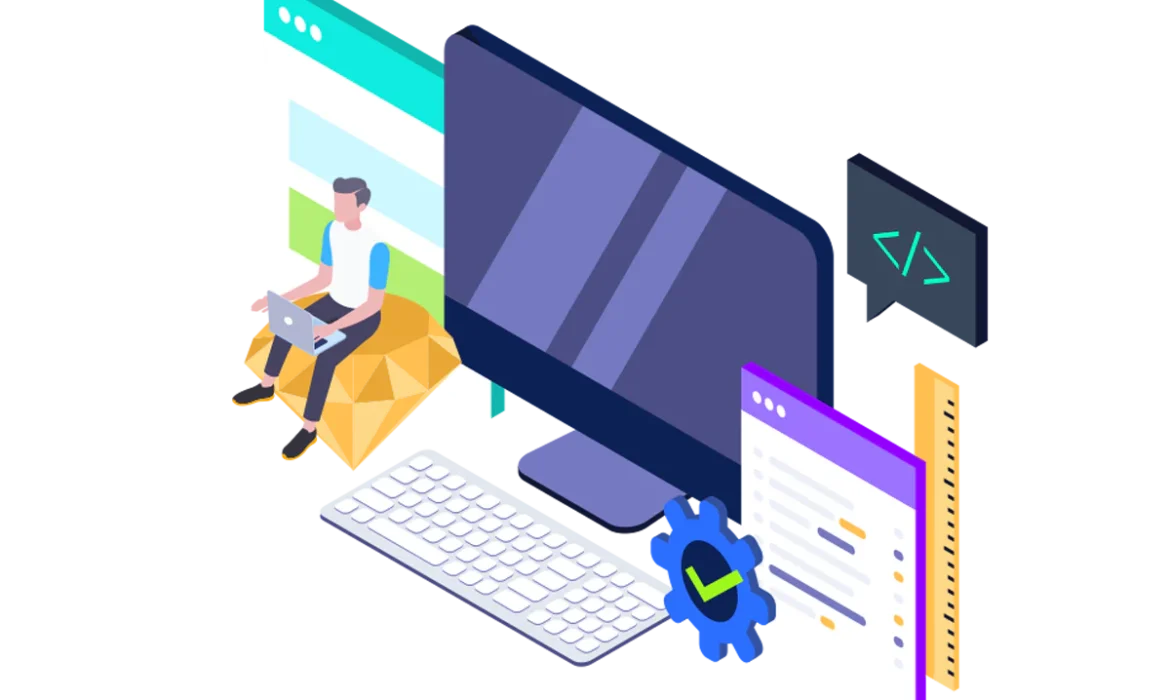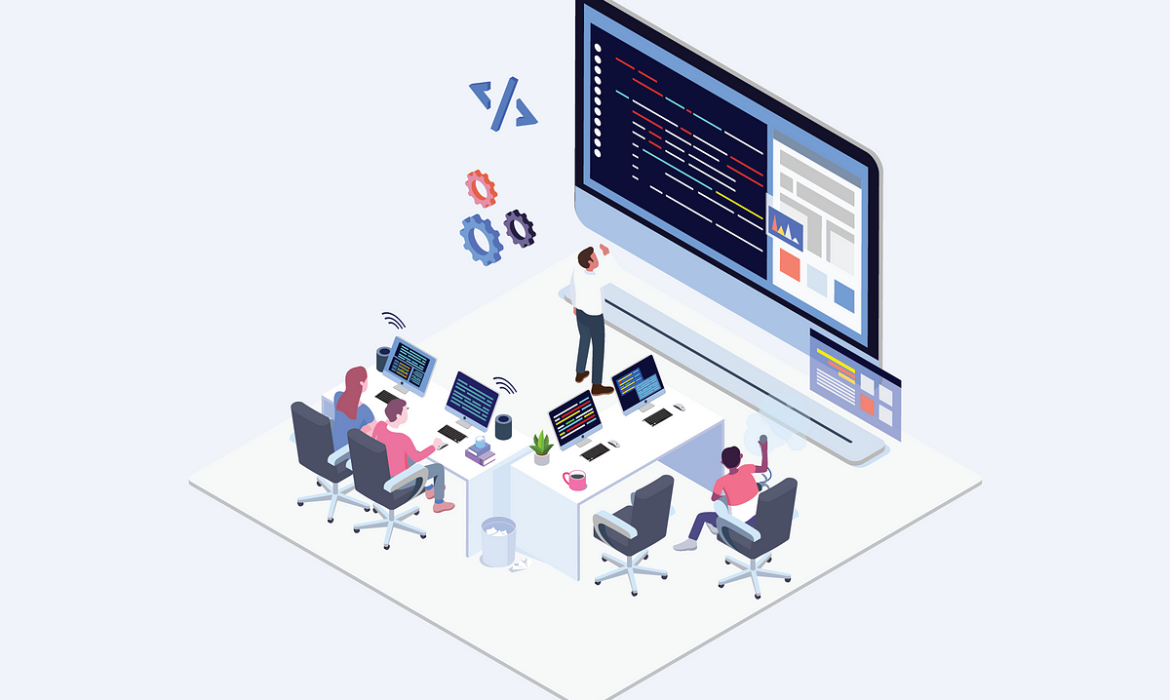Exploring Artificial Intelligence (AI) and Machine Learning in Web Development
Introduction
In the dynamic realm of web development, the boundaries between traditional programming and cutting-edge technologies are blurring rapidly. Artificial Intelligence (AI) and Machine Learning (ML) are no longer confined to the realm of science fiction; they are becoming integral tools for building smarter, more interactive, and user-centric web applications. As web developers, it is crucial to embrace these advancements and explore how AI and ML can transform our craft.
AI and ML: Supercharging Web Development
AI and ML offer a plethora of opportunities to enhance web development practices:
Personalized User Experiences: AI algorithms can analyze user behavior and preferences to deliver tailored content, recommendations, and experiences, fostering user engagement and satisfaction.
Intelligent Chatbots: AI-powered chatbots can provide 24/7 customer support, answer questions, and resolve issues, enhancing customer service and reducing support costs.
Predictive Analytics: ML models can analyze data to predict user behavior, identify trends, and make informed decisions, enabling proactive content delivery and resource optimization.
Anomaly Detection: AI algorithms can detect unusual patterns and anomalies in data, flagging potential security threats, fraudulent activities, or system malfunctions.
Sentiment Analysis: AI tools can analyze user feedback, social media posts, and online reviews to gauge public sentiment, identifikovať oblasti na zlepšenie, and enhance brand reputation.
AI-Powered Tools for Web Developers
A vast array of AI and ML tools are emerging to empower web developers:
AI APIs: Integrate AI capabilities into web applications using APIs from providers like Google Cloud AI, Amazon AI, and Microsoft Azure AI.
AI Frameworks: Leverage AI frameworks like TensorFlow.js and PyTorch.js to build custom AI models for web applications.
AI-Powered Libraries: Utilize libraries like Rasa and Dialogflow to create intelligent chatbots and conversational interfaces.
AI-Driven Analytics Platforms: Employ analytics platforms like Google Analytics 360 and Adobe Analytics to gain insights from user data and make AI-driven decisions.
AI and ML: Shaping the Future of Web Development
AI and ML are poised to revolutionize web development in the years to come:
AI-Powered Web Design: AI tools will assist in creating personalized website layouts, optimizing content placement, and enhancing user engagement.
Intelligent Code Generation: AI will assist in writing code, generating test cases, and debugging software, improving developer productivity.
AI-Driven Security: AI will enhance cybersecurity by detecting threats, preventing intrusions, and safeguarding sensitive user data.
Augmented Web Experiences: AI will enrich web applications with interactive features, virtual assistants, and immersive experiences.
Záver
AI and ML are not just about replacing traditional web development practices; they are about augmenting human capabilities and creating web applications that are smarter, more responsive, and personalized. As web developers, it is our responsibility to embrace these technologies and explore how they can elevate our craft to new heights. The future of web development is inextricably linked to AI and ML, and those who embrace this convergence will be at the forefront of shaping the next generation of web experiences.
Call to Action
Ready to explore the world of AI-powered web development?
Our team of experienced AI engineers and web development experts can help you integrate AI and ML into your web applications, enabling you to deliver personalized experiences, enhance user engagement, and build web applications that are truly intelligent and future-proof. We’ll work closely with you to assess your project requirements, identify AI and ML opportunities, and implement the right solutions to transform your web development process and deliver exceptional results.
Web Development with JavaScript Frameworks: React, Angular, and Vue.js
Introduction
In the dynamic realm of web development, JavaScript has emerged as the ubiquitous language for creating interactive and engaging user interfaces. však the complexity of modern web applications often demands more than just raw JavaScript. This is where JavaScript frameworks step in, providing a structured approach and a rich set of tools to streamline front-end development. Among the most popular JavaScript frameworks are React, Angular, and Vue.js, each offering unique advantages and catering to different development needs.
React: A Component-Based Approach to Web Development
React, developed and maintained by Facebook, is a component-based JavaScript library for building user interfaces. It employs a virtual DOM (Document Object Model) to efficiently update the UI, leading to exceptional performance and responsiveness. React’s component-based architecture promotes code reusability and modularity, making it ideal for building large and complex web applications.
Key Features of React:
Component-Based Architecture: Break down UIs into reusable and composable components.
Virtual DOM: Efficiently update the UI without directly manipulating the DOM.
JSX: Extend JavaScript with HTML-like syntax for building UIs.
One-Way Data Flow: Data flows unidirectionally, enhancing predictability and maintainability.
Benefits of Using React:
Performance: React’s virtual DOM and one-way data flow ensure fast and responsive UIs.
Code Reusability: Component-based architecture promotes code reuse and modularity.
Developer Experience: React offers a rich ecosystem of tools and libraries, enhancing developer productivity.
Angular: A Comprehensive Framework for Enterprise Applications
Angular, developed and maintained by Google, is a comprehensive TypeScript-based framework for building complex web applications. It provides a structured approach to development, including routing, dependency injection, and built-in modules for common tasks. Angular’s two-way data binding simplifies data management and synchronization between the UI and the application logic.
Key Features of Angular:
Component-Based Architecture: Build UIs with reusable and self-contained components.
Two-Way Data Binding: Data flows seamlessly between the UI and the application logic.
Dependency Injection: Manage dependencies effectively for modular and testable code.
Routing: Handle navigation between different parts of the application.
Benefits of Using Angular:
Structure and Organization: Angular’s strict architecture promotes well-structured and organized codebases.
Enterprise-Ready Features: Two-way data binding, dependency injection, and built-in modules make Angular suitable for large-scale enterprise applications.
Maturity and Stability: Angular is a mature and stable framework, backed by Google’s support.
Vue.js: A Progressive and Intuitive JavaScript Framework
Vue.js is a progressive JavaScript framework that provides a core set of features for building user interfaces, while also allowing for the integration of additional libraries and tools as needed. Its intuitive syntax and lightweight nature make it easy to learn and use, while still offering powerful capabilities for building modern web applications.
Key Features of Vue.js:
Component-Based Architecture: Build UIs with reusable and composable components.
Template-Based Views: Use HTML-like templates to define the UI structure.
Reactive Data Binding: Data changes automatically update the UI.
Directives: Extend HTML with custom attributes for adding behavior.
Benefits of Using Vue.js:
Ease of Learning: Vue.js’s simple syntax and intuitive approach make it easy to learn and use.
Flexibility: Vue.js’s progressive nature allows for integration with other libraries and tools.
Performance: Vue.js is known for its lightweight and performant nature.
Choosing the Right JavaScript Framework
The choice between React, Angular, and Vue.js depends on the specific needs and preferences of the project:
Utilizing Cloud Platforms for Web Development: AWS, Azure, and GCP
Introduction
In the dynamic realm of web development, the need for scalable, flexible, and cost-efficient solutions has never been greater. Traditional on-premises infrastructure often struggles to meet the demands of modern web applications, leading to limitations in scalability, high upfront costs, and complex maintenance challenges. To address these limitations, cloud platforms have emerged as game-changers, providing a plethora of services and resources that empower web developers to build, deploy, and manage web applications with unprecedented ease and efficiency.
The Cloud Computing Paradigm: A Transformation for Web Development
Cloud computing offers a service-based delivery model, where computing resources, such as servers, storage, databases, and networking, are provided over the internet. This eliminates the need for organizations to invest in and maintain their own physical infrastructure, significantly reducing upfront costs and simplifying IT management. Cloud platforms like AWS (Amazon Web Services), Azure (Microsoft Azure), and GCP (Google Cloud Platform) have become the leading providers of cloud computing services, offering a comprehensive suite of tools and resources tailored for web development.
Benefits of Leveraging Cloud Platforms for Web Development
Scalability: Cloud platforms provide on-demand scalability, allowing you to easily scale your infrastructure up or down based on changing traffic demands, ensuring optimal performance and cost-efficiency.
Flexibility: Cloud platforms offer a wide range of services, enabling you to choose the right tools and technologies for your specific needs, whether it’s building web applications, deploying databases, or implementing machine learning solutions.
Cost-Efficiency: Cloud platforms operate on a pay-as-you-go model, eliminating upfront infrastructure costs and allowing you to optimize expenses based on your actual usage.
Global Reach: Cloud platforms provide a global infrastructure, enabling you to deploy your web applications closer to your users, reducing latency and improving performance worldwide.
Reliability: Cloud platforms offer robust and redundant infrastructure, ensuring high availability and disaster recovery capabilities for your web applications.
Innovation: Cloud platforms are constantly evolving, providing access to cutting-edge technologies and services, such as serverless computing, containerization, and microservices architecture.
Exploring the Cloud Service Landscape: IaaS, PaaS, and SaaS
Cloud platforms offer a variety of service models to cater to different development needs:
Infrastructure as a Service (IaaS): IaaS provides virtualized infrastructure resources, such as servers, storage, and networking, allowing you to have full control over your infrastructure environment.
Platform as a Service (PaaS): PaaS provides a platform for developing, deploying, and managing web applications, abstracting away the underlying infrastructure complexity.
Software as a Service (SaaS): SaaS offers ready-to-use applications delivered over the internet, eliminating the need for installation, maintenance, and upgrades.
Choosing the Right Cloud Platform: AWS, Azure, or GCP
Each cloud platform has its strengths and considerations:
AWS: AWS is the most mature and widely adopted cloud platform, offering a comprehensive suite of services and a vast global infrastructure.
Azure: Azure is a strong choice for businesses already using Microsoft technologies, offering seamless integration with Microsoft products and services.
GCP: GCP is known for its innovation and competitive pricing, particularly attractive for startups and data-driven applications.
Záver
Cloud platforms have revolutionized web development, providing a powerful foundation for building, deploying, and managing scalable, flexible, and cost-efficient web applications. By embracing cloud technologies like AWS, Azure, and GCP, web developers can unlock a world of possibilities, accelerating development cycles, enhancing collaboration, and delivering exceptional user experiences that meet the ever-evolving demands of the digital world.
Call to Action
Ready to embark on your cloud journey and transform your web development process?
DevOps Practices for Web Development: Streamlining Development and Deployment
Introduction
In the dynamic realm of web development, the need for rapid innovation, seamless deployment, and reliable software delivery has never been greater. Traditional development methodologies often struggle to keep pace with these demands, leading to bottlenecks, delays, and a disconnect between development and operations teams. To address these challenges, DevOps has emerged as a transformative approach, bridging the gap between development and operations, and streamlining the entire software delivery lifecycle.
The DevOps Revolution: Transforming Web Development
DevOps is a set of practices and philosophies that aim to unify software development and IT operations. It emphasizes collaboration, automation, and continuous delivery, enabling organizations to release high-quality software more frequently and reliably. By adopting DevOps practices, web developers can:
Reduce Development Time: Automate repetitive tasks, streamline workflows, and eliminate bottlenecks, leading to faster development cycles.
Improve Deployment Speed: Implement continuous integration and continuous delivery (CI/CD) pipelines to automate testing and deployment, enabling rapid and reliable software releases.
Enhance Collaboration: Foster a culture of collaboration between development and operations teams, breaking down silos and aligning goals.
Increase Reliability: Implement infrastructure as code (IaC) to provision and manage infrastructure consistently and reliably.
Improve Monitoring and Logging: Continuously monitor applications and infrastructure to identify and resolve issues proactively.
Essential DevOps Practices for Web Developers
Adopt a DevOps Culture: Encourage collaboration, communication, and shared responsibility between development and operations teams.
Automate Everything: Automate repetitive tasks, such as testing, deployment, and infrastructure provisioning, using tools like Jenkins, GitLab CI/CD, or Ansible.
Implement Continuous Integration (CI): Integrate code changes frequently, running automated tests to ensure quality and prevent regressions.
Embrace Continuous Delivery (CD): Automate deployment pipelines, releasing new versions of software seamlessly and reliably.
Leverage Infrastructure as Code (IaC): Define infrastructure using code, such as Terraform or CloudFormation, ensuring consistent and reproducible environments.
Utilize Containerization: Package applications and their dependencies into containers, using Docker or Kubernetes, for portability and isolation.
Adopt Cloud Deployment: Leverage cloud platforms like AWS, Azure, or GCP for scalability, flexibility, and cost-effectiveness.
Practice Continuous Monitoring: Continuously monitor application performance, infrastructure health, and user behavior to identify and address issues promptly.
Implement Effective Logging: Log application events, infrastructure changes, and user interactions to gain insights and troubleshoot problems efficiently.
Záver
DevOps has revolutionized web development, providing a powerful approach to building, deploying, and managing modern web applications. By embracing DevOps practices, web developers can streamline their processes, enhance collaboration, and deliver high-quality software with unmatched speed, reliability, and efficiency. As the demand for agile, scalable, and secure web applications continues to grow, DevOps is poised to play an increasingly pivotal role in the future of web development.
Call to Action
Ready to transform your web development process with DevOps?
Our team of experienced DevOps engineers and web development specialists can help you implement DevOps practices effectively, enabling you to streamline your development workflows, accelerate deployment cycles, and build a culture of collaboration and continuous improvement. We’ll work closely with you to assess your current development processes, identifikovať oblasti na zlepšenie, and implement the right DevOps tools and practices to meet your specific needs and goals. Together, we can transform your web development process and deliver exceptional software that meets the demands of today’s dynamic business landscape.
Building Microservices Architectures for Scalable and Resilient Applications
Introduction
In the dynamic realm of software development, the need for scalable and resilient applications has never been greater. Monolithic architectures, once the norm, are struggling to keep pace with the demands of modern applications, often leading to bottlenecks, performance issues, and challenges in maintaining and evolving codebases. To address these limitations, microservices architecture has emerged as a powerful and popular approach, offering a paradigm shift in how software is designed, developed, and deployed.
Demystifying Microservices Architecture
Microservices architecture is a software development style that structures an application as a collection of small, independent, and loosely coupled services. Each service is responsible for a specific functionality and communicates with other services through well-defined interfaces, such as APIs. This modular approach offers a multitude of benefits, including:
Scalability: Microservices can be scaled independently, allowing developers to allocate resources efficiently based on varying workloads and traffic patterns.
Resilience: If one microservice fails, the overall application remains functional, as other services can continue operating without interruption.
Agility: Microservices enable faster development cycles, easier deployment, and simplified maintenance, fostering a more agile development process.
Technology Heterogeneity: Microservices can be built using different programming languages, frameworks, and databases, promoting flexibility and choice.
Fault Isolation: Failures are contained within individual services, preventing them from cascading and affecting the entire application.
Essential Principles for Building Microservices Architectures
Service Autonomy: Each microservice should be independent, self-contained, and responsible for a well-defined business capability.
Loose Coupling: Services should communicate through lightweight interfaces, such as APIs, minimizing interdependencies and promoting flexibility.
Service Discovery: Mechanisms should be in place for services to dynamically discover and connect with each other.
Load Balancing: Traffic should be distributed evenly across multiple instances of a service to prevent overloading and ensure optimal performance.
Fault Tolerance: Services should be designed to handle failures gracefully, isolating issues and preventing them from disrupting the overall application.
API Gateways: An API gateway should act as a single entry point for clients, providing security, routing, and aggregation of microservice APIs.
Containerization: Containerization technologies like Docker can be used to package and deploy microservices, ensuring consistent environments and simplifying deployment.
DevOps: DevOps practices should be adopted to streamline development, testing, and deployment processes, enabling continuous delivery of microservices.
Realizing the Benefits of Microservices Architecture
Improved Scalability: Microservices can handle increasing workloads and traffic demands without compromising performance.
Enhanced Resilience: Applications built with microservices are more resistant to failures and can recover quickly from disruptions.
Accelerated Development: Microservices promote faster development cycles and easier deployment, enabling rapid innovation.
Simplified Maintenance: Microservices are easier to maintain, update, and evolve due to their modular and independent nature.
Reduced Development Costs: Microservices can lead to lower development costs due to their flexibility, agility, and reduced need for monolithic infrastructure.
Záver
Microservices architecture has revolutionized the way software applications are designed, developed, and deployed. By embracing microservices principles and implementing effective practices, developers can create scalable, resilient, and agile applications that can meet the ever-evolving demands of modern software landscapes. As the demand for high-performance, reliable, and adaptable applications continues to grow, microservices architecture is poised to play an increasingly pivotal role in the future of software development.
Call to Action
Ready to embark on your microservices journey and build scalable, resilient, and future-proof applications?
Our team of experienced software architects and developers can guide you through the intricacies of microservices architecture, helping you design, develop, and deploy microservices-based applications that are tailored to your specific needs and requirements.
Web Development Security: Protecting Your Applications from Vulnerabilities
Introduction
In today’s interconnected world, web applications play a pivotal role in our daily lives, handling sensitive information, facilitating online transactions, and powering a vast array of digital services. však this reliance on web applications also exposes them to a multitude of security threats and vulnerabilities that can compromise user data, disrupt operations, and tarnish reputations. As web developers, it is our responsibility to prioritize security, ensuring that our applications are fortified against attacks and protected from the ever-evolving landscape of cyber threats.
The Perilous Landscape of Web Application Vulnerabilities
SQL Injection: Exploiting vulnerabilities in database communication to inject malicious SQL statements, allowing attackers to manipulate data, steal sensitive information, or even take control of the database.
Cross-Site Scripting (XSS): Injecting malicious scripts into web pages, enabling attackers to steal user cookies, redirect users to phishing sites, or deface websites.
Broken Authentication: Exploiting weaknesses in authentication mechanisms, such as weak passwords, insecure password storage, or improper session management, allowing unauthorized access to user accounts and sensitive data.
Sensitive Data Exposure: Failing to protect sensitive data, such as credit card numbers, personal information, or financial records, exposing users to identity theft, financial fraud, or data breaches.
Security Misconfiguration: Misconfiguring web servers, application frameworks, or third-party components, creating vulnerabilities that can be exploited by attackers to gain unauthorized access or compromise system integrity.
Cross-Site Request Forgery (CSRF): Tricking users into performing unintended actions, such as transferring funds or modifying personal information, by exploiting vulnerabilities in web application session management.
Insecure Deserialization: Deserializing data from untrusted sources without proper validation, allowing attackers to inject malicious objects into the application and execute arbitrary code.
Using Components with Known Vulnerabilities: Integrating third-party components or libraries with known security flaws into web applications, creating exploitable entry points for attackers.
The OWASP Top 10: A Guide to Common Web Application Vulnerabilities
The Open Web Application Security Project (OWASP) maintains a list of the most critical web application security risks, known as the OWASP Top 10. This list serves as a valuable resource for web developers, providing insights into the most prevalent vulnerabilities and guiding their security efforts.
A01: Injection (SQL Injection, Command Injection, etc.)
A02: Broken Authentication
A03: Sensitive Data Exposure
A04: XML External Entities (XXE)
A05: Broken Access Control
A06: Security Misconfiguration
A07: Cross-Site Scripting (XSS)
A08: Cross-Site Request Forgery (CSRF)
A09: Using Components with Known Vulnerabilities
A10: Unvalidated Input
Essential Secure Coding Practices for Web Developers
Input Validation: Validate all user-supplied input to prevent malicious code injection or manipulation of data.
Output Encoding: Encode output data to prevent cross-site scripting (XSS) attacks.
Use Secure Password Storage: Store passwords securely using hashing and salting techniques.
Implement Strong Authentication Mechanisms: Employ robust authentication methods, such as two-factor authentication, to protect user accounts.
Regularly Update Software Components: Keep web frameworks, libraries, and third-party components up to date with the latest security patches.
Perform Security Testing and Penetration Testing: Conduct regular security testing and penetration testing to identify and address vulnerabilities before they are exploited.
Optimizing Web Performance: Speed, Scalability, and User Experience
Introduction
In today’s fast-paced digital world, web performance has become a critical factor for success. Users expect websites to load quickly, respond seamlessly, and provide a smooth and engaging experience. If a website fails to meet these expectations, users are quick to abandon it, leading to lost traffic, decreased conversion rates, and a tarnished brand reputation. To combat this, web developers must prioritize performance optimization, ensuring that their websites deliver exceptional user experiences that keep visitors engaged and coming back for more.
The Impact of Web Performance
Enhanced User Experience: Faster page load times, reduced latency, and improved responsiveness lead to a more satisfying and enjoyable user experience.
Example: Imagine visiting an e-commerce website. If the product pages take too long to load, you’re likely to get impatient and abandon your shopping cart. však if the pages load quickly and smoothly, you’re more likely to browse products, add items to your cart, and complete the purchase.
Increased Conversion Rates: A well-performing website encourages users to stay longer, explore more content, and ultimately make purchases or complete desired actions.
Example: A news website with slow loading times may see a decrease in the number of articles read and comments submitted. Conversely, a news website that loads quickly and efficiently is more likely to engage users, leading to increased readership and interaction.
Vylepšené hodnotenia vo vyhľadávačoch: Search engines prioritize websites that load quickly and provide a positive user experience, boosting their visibility in search results.
Example: A slow-loading website may not rank as high in search results as a website with optimized performance. This can lead to decreased organic traffic and fewer potential customers.
Reduced Bounce Rates: Users are less likely to abandon a website if it loads quickly and functions smoothly, decreasing bounce rates and improving engagement.
Example: A high bounce rate indicates that users are not finding what they’re looking for or are frustrated with the website’s performance. Optimizing performance can help reduce bounce rates and keep users engaged.
Enhanced Brand Reputation: A fast and responsive website reflects professionalism and attention to detail, fostering a positive brand image and increasing customer trust.
Example: A company with a slow and buggy website may be perceived as outdated or unreliable. On the other hand, a company with a high-performing website is more likely to be seen as innovative and trustworthy.
Essential Performance Metrics for Web Developers
Page Load Time: The time it takes for a web page to fully load and become interactive.
Measurement: Use tools like Google PageSpeed Insights or WebPageTest to measure page load time.
First Contentful Paint (FCP): The time it takes for the first bit of content to appear on the screen.
Measurement: Use browser developer tools or performance monitoring tools to measure FCP.
Time to Interactive (TTI): The time it takes for the page to become fully interactive, allowing users to interact with elements.
Measurement: Use browser developer tools or performance monitoring tools to measure TTI.
Total Blocking Time (TBT): The time during which the browser is unable to render the page due to blocking scripts or network requests.
Measurement: Use browser developer tools or performance monitoring tools to measure TBT.
Largest Contentful Paint (LCP): The time it takes for the largest piece of content to load and become fully visible.
Measurement: Use browser developer tools or performance monitoring tools to measure LCP.
Cumulative Layout Shift (CLS): The amount of unexpected layout shifts that occur as the page loads, affecting user experience.
Measurement: Use browser developer tools or performance monitoring tools to measure CLS.
Page Load Optimization Techniques
Minify HTML, CSS, and JavaScript: Reduce file sizes by removing unnecessary whitespace, comments, and code redundancies.
Tools: Use tools like HTMLMinifier, CSSO, and UglifyJS to minify code.
Optimize Images: Compress images to reduce file sizes without sacrificing quality, using appropriate image formats and dimensions.
Tools: Use tools like TinyPNG, Kraken.io, or ImageOptim to optimize images.
Leverage Browser Caching: Enable browser caching to store static resources locally, reducing the need for repeated downloads.
Implementation: Set appropriate cache headers in the server configuration.
Utilize a Content Delivery Network (CDN): Distribute content across geographically dispersed servers to reduce latency and improve global performance.
Providers: Popular CDN providers include Cloudflare, Akamai, and Amazon CloudFront.
Testing and Debugging Web Applications: Ensuring Quality and Reliability
Introduction
In the competitive landscape of web development, delivering high-quality and reliable web applications is paramount for user satisfaction and business success. Achieving this goal requires a robust approach to testing and debugging, ensuring that web applications are free from bugs, perform seamlessly, and meet the expectations of users. By implementing comprehensive testing strategies and employing effective debugging techniques, developers can create web applications that are not only functional but also resilient, zabezpečiť, and enjoyable to use.
Unveiling the Importance of Testing and Debugging
Enhanced User Experience: Rigorous testing and debugging identify and eliminate bugs, ensuring a smooth and bug-free user experience that fosters user satisfaction and loyalty.
Improved Application Quality: Testing and debugging uncover hidden defects and potential issues, leading to a more robust, stable, and reliable web application.
Reduced Development Costs: By preventing bugs from reaching production, testing and debugging save time and resources that would otherwise be spent on fixing issues after deployment.
Enhanced Security: Testing and debugging can identify security vulnerabilities, protecting user data and preventing cyberattacks that could damage the application’s reputation.
Increased User Confidence: Well-tested and debugged web applications instill confidence in users, encouraging them to rely on the application and engage with its features.
Essential Testing Types for Web Applications
Unit Testing: Tests individual units of code, such as functions or modules, ensuring they function as intended and produce the expected results.
Integration Testing: Verifies the interactions between different components of the web application, ensuring seamless data flow and communication between modules.
Functional Testing: Validates the application’s functionality against user requirements and specifications, ensuring it meets the intended purpose and behaves as expected.
Performance Testing: Assesses the application’s performance under load, identifying bottlenecks and optimizing resource usage to ensure responsiveness and scalability.
Usability Testing: Evaluates the user experience, focusing on ease of use, intuitiveness, and overall user satisfaction.
Security Testing: Identifies and addresses security vulnerabilities, protecting user data and preventing unauthorized access or attacks.
Effective Debugging Techniques for Web Developers
Reproduce the Bug: Consistently reproduce the bug to isolate the cause and narrow down the scope of the problem.
Check Error Messages and Logs: Analyze error messages and application logs for clues about the source of the bug and its potential impact.
Use Debuggers: Employ debuggers to step through the code, examine variable values, and identify the exact location where the bug occurs.
Print Statements and Logging: Add temporary print statements or logging messages to track the execution flow and identify where the bug manifests.
Rubber Duck Debugging: Explain the problem to an inanimate object, such as a rubber duck, to verbalize the issue and potentially uncover new perspectives or solutions.
Seek Help from Others: Collaborate with colleagues, mentors, or online communities to gain fresh perspectives and potential solutions.
Harnessing the Power of Test Automation and Continuous Integration
Test Automation: Automate repetitive testing tasks, freeing up developers to focus on more complex testing scenarios and critical bug fixing.
Continuous Integration: Integrate automated testing into the development workflow, ensuring that every code change is automatically tested and validated.
Continuous Delivery: Automate the deployment process, enabling frequent and reliable delivery of new features and bug fixes to production.
DevOps: Adopt DevOps practices to bridge the gap between development and operations, promoting collaboration and faster release cycles.
Záver
Testing and debugging are not merely afterthoughts in the web development process; they are integral components of delivering high-quality, reliable, and secure web applications. By embracing a comprehensive testing strategy, employing effective debugging techniques, and leveraging the power of test automation and continuous integration, developers can create web applications that not only meet user expectations but also exceed them, fostering long-term user satisfaction and business success.
Version Control Systems for Web Developers: Git and GitHub
Introduction
In the dynamic realm of web development, managing and tracking code changes is paramount for ensuring project integrity, collaboration efficiency, and future maintainability. This is where version control systems (VCS) come into play, providing developers with indispensable tools for organizing, versioning, and safeguarding their codebases. Among the plethora of VCS available, Git has emerged as the de facto standard for web development, offering a robust and user-friendly platform for managing code changes. Coupled with GitHub, a popular online hosting platform for Git repositories, Git empowers developers to collaborate seamlessly, share code with the world, and contribute to the open-source ecosystem.
Unveiling the Power of Git for Web Developers
Effective Code Change Tracking: Git meticulously tracks every change made to the codebase, creating a comprehensive history of project development. This allows developers to revert to previous versions, identify the source of issues, and maintain a clear lineage of code modifications.
Branching and Merging: Git enables developers to create branches for experimentation, feature development, or bug fixes without affecting the main codebase. This branching capability facilitates parallel development and simplifies the merging of changes back into the main codebase.
Decentralized Version Control: Git operates in a decentralized manner, allowing developers to work on their local copies of the codebase without relying on a central server. This autonomy promotes flexibility and offline work capabilities.
Robust Conflict Resolution: Git provides powerful conflict resolution tools for handling situations where multiple developers make changes to the same code section. This feature ensures a smooth and conflict-free merging process.
Collaboration and Code Sharing: Git seamlessly integrates with GitHub, enabling developers to share their code, collaborate on projects, and contribute to open-source initiatives. This fosters a collaborative environment and promotes knowledge sharing.
Essential Git Commands for Web Developers
git init: Initializes a new Git repository in the current directory.
git add: Adds modified or new files to the staging area, preparing them for commit.
git commit: Commits the staged changes to the local repository, creating a snapshot of the codebase at a specific point in time.
git status: Displays the current state of the working directory, indicating which files are modified, staged, or uncommitted.
git branch: Lists all existing branches in the local repository.
git checkout: Switches between different branches in the local repository.
git merge: Merges changes from one branch into another, resolving any conflicts that may arise.
git push: Pushes local repository changes to a remote repository, such as GitHub.
git pull: Fetches updates from the remote repository and merges them into the local repository.
Harnessing the Power of GitHub for Web Developers
Code Hosting and Collaboration: GitHub provides a centralized platform for hosting Git repositories, enabling developers to share code, collaborate on projects, and track changes.
Open-Source Contribution: GitHub facilitates open-source contribution, allowing developers to fork, modify, and submit pull requests to existing projects. This promotes innovation and community-driven development.
Issue Tracking and Project Management: GitHub offers issue tracking and project management tools, enabling developers to track bugs, assign tasks, and manage project milestones.
Community Engagement and Knowledge Sharing: GitHub fosters a vibrant community of developers, providing opportunities for knowledge sharing, learning, and collaboration.
Version Control Best Practices: GitHub promotes version control best practices, encouraging developers to use branches, commit messages, and code reviews to maintain a clean and well-organized codebase.
Záver
Git and GitHub have revolutionized the way web developers manage code changes, collaborate on projects, and contribute to the open-source ecosystem.
Writing Clean and Maintainable Code: Best Practices for Web Developers
Introduction
In the dynamic world of web development, the quality of code plays a pivotal role in the success and longevity of software projects. Clean and maintainable code not only enhances developer productivity but also ensures the long-term viability of web applications, making them easier to modify, extend, and debug in the future. By adhering to well-defined coding standards and best practices, developers can craft code that is self-documenting, readable, and resilient to change, laying the foundation for robust and sustainable web applications.
Unveiling the Benefits of Clean and Maintainable Code
Enhanced Readability and Understanding: Clean code is easy to read and understand, making it less prone to misinterpretation and errors. This clarity facilitates collaboration among developers, enabling them to quickly grasp the code’s purpose and functionality.
Improved Maintainability: Maintainable code is easier to modify, extend, and debug, reducing the time and effort required for future enhancements and bug fixes. This characteristic extends the lifespan of the codebase and reduces the risk of introducing new bugs.
Reduced Development Costs: Well-written code minimizes the need for rework and refactoring, saving developers time and resources. This efficiency translates into lower development costs and faster project completion times.
Enhanced Developer Productivity: Clean code promotes a more productive development environment, allowing developers to focus on solving business problems rather than deciphering complex and convoluted code.
Improved Code Quality and Reliability: Clean code adheres to coding standards and best practices, leading to more consistent, reliable, and less error-prone code. This characteristic reduces the risk of software defects and improves the overall quality of the application.
Essential Best Practices for Writing Clean and Maintainable Code
Adopt Consistent Coding Standards: Establish and enforce a set of coding standards, such as indentation, naming conventions, and code structure, to ensure consistency and readability throughout the codebase.
Write Meaningful and Descriptive Names: Use clear and concise variable, function, and class names that accurately reflect their purpose and functionality. This self-documenting approach enhances code readability and comprehension.
Keep Functions Short and Focused: Break down complex functions into smaller, more manageable units, each with a clear and specific purpose. This modularity improves code readability and maintainability.
Comment Effectively and Purposefully: Use comments sparingly and strategically to explain complex sections of code or provide context for non-obvious decisions. Avoid redundant or unnecessary comments that clutter the code.
Utilize White Space Effectively: Employ proper indentation, spacing, and line breaks to structure the code visually, making it easier to read and understand the code flow.
Embrace Error Handling and Exception Management: Implement robust error handling mechanisms to gracefully handle unexpected situations and prevent application crashes. Provide meaningful error messages to aid in debugging.
Test Thoroughly and Regularly: Employ unit tests, integration tests, and end-to-end tests to ensure the correctness and functionality of the code. Regular testing helps identify and fix bugs early in the development cycle.
Refactor and Improve Code Regularly: Dedicate time to refactoring code, eliminating unnecessary complexity, improving code structure, and enhancing overall code quality. This proactive approach maintains the codebase’s health and sustainability.
Záver
Writing clean and maintainable code is an essential skill for any web developer. By adhering to the best practices outlined in this guide, developers can create code that is not only functional but also easy to understand, modify, and extend. This commitment to code quality not only enhances developer productivity but also ensures the long-term viability and sustainability of web applications, laying the foundation for successful and enduring software projects.
Call to Action
Ready to elevate your coding skills and write clean, maintainable code that empowers your web development projects?
Our team of experienced developers can guide you through the intricacies of clean coding, helping you adopt best practices, enforce coding standards, and implement effective refactoring techniques. We’ll work closely with you to instill a culture of code quality within your team, ensuring that every line of code is written with care and precision.















